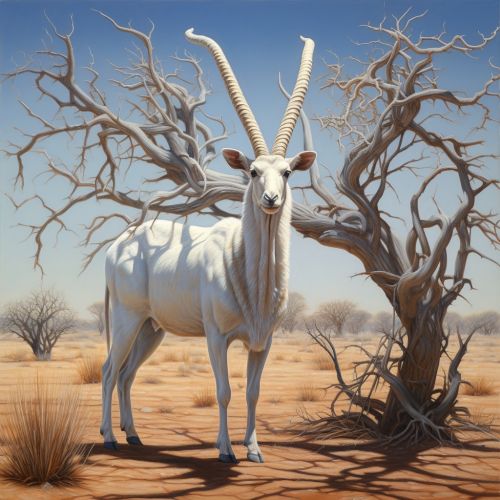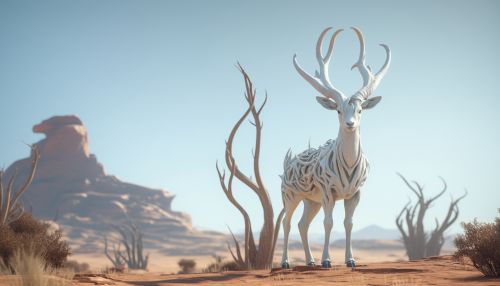Addax nasomaculatus
Taxonomy and Description
The Addax nasomaculatus, also known as the white antelope or the screwhorn antelope, is a species of antelope native to the Sahara. This animal is characterized by its pale coat, which is an adaptation to the desert environment, and its long, twisted horns, which have given it its alternative name.


The Addax nasomaculatus belongs to the family Bovidae, which includes other antelopes, gazelles, and cattle. It is the sole member of the genus Addax. This species was first described by the French naturalist Henri de Blainville in 1816. The species name, nasomaculatus, refers to the distinctive pattern of dark patches on the animal's nose.
Distribution and Habitat
The Addax nasomaculatus is endemic to the Sahara Desert, once ranging across the entire expanse of the desert. However, due to habitat loss and hunting, its range has been significantly reduced. Today, it is primarily found in isolated pockets in the central and western parts of the Sahara, particularly in Mauritania, Niger, and Chad.
This species is well-adapted to the harsh desert environment. Its pale coat reflects sunlight, helping to keep the animal cool, while its broad, flat hooves prevent it from sinking into the sand. The Addax nasomaculatus is also capable of going for long periods without water, obtaining most of its hydration from the plants it eats.
Behaviour and Ecology
The Addax nasomaculatus is a nomadic species, moving across the desert in search of food. It is primarily a grazer, feeding on a variety of desert plants, including grasses, herbs, and leaves. During the dry season, it can survive on drought-resistant plants and even dig for underground tubers.
This species is known for its social behaviour, typically forming herds of around 20 individuals. These herds are often led by a dominant male, who defends the group from predators and rival males. During the breeding season, males engage in fierce battles for the right to mate with females.
The Addax nasomaculatus has a gestation period of around nine months, after which a single calf is born. The calf is able to stand and run within a few hours of birth, an important adaptation for survival in the predator-rich desert environment.
Conservation Status
The Addax nasomaculatus is currently listed as Critically Endangered on the IUCN Red List. The primary threats to this species are habitat loss, due to the expansion of agriculture and industry, and hunting, for its meat and horns. Despite legal protections in many countries, enforcement is often weak, and illegal hunting continues to be a major problem.
Conservation efforts for the Addax nasomaculatus include habitat protection and restoration, anti-poaching measures, and captive breeding programs. Several zoos and wildlife parks around the world, including the San Diego Zoo in the United States and the Djebel Babor Nature Reserve in Algeria, have successful breeding programs for this species.
